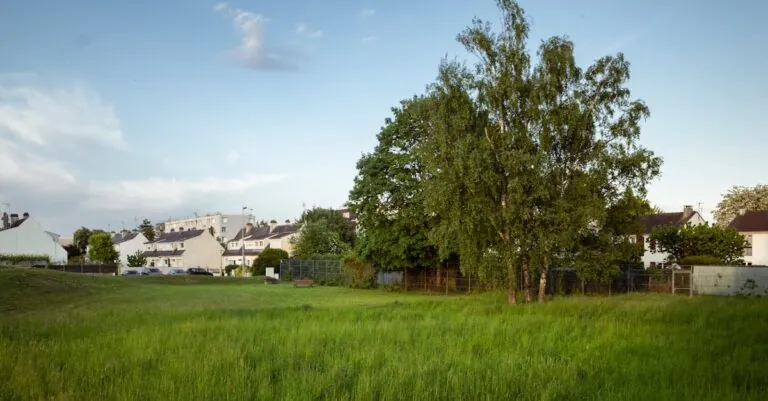Buying your first home is like preparing for a first date—exciting yet nerve-wracking. You want everything to go smoothly, but the thought of that hefty down payment can feel like a punch to the gut. Fear not! With the right tips in your back pocket, you can turn that daunting down payment into a manageable stepping stone toward homeownership.
Table of Contents
ToggleUnderstanding Down Payments
Down payments play a crucial role in the process of purchasing a home. They represent a percentage of the home’s purchase price that buyers pay upfront.
What Is a Down Payment?
A down payment is a sum of money paid at the beginning of a home purchase. This amount typically ranges from 3% to 20% of the home’s total price. Lenders use down payments to assess buyer risk. A larger down payment can lower monthly mortgage payments. Additionally, it may eliminate the need for private mortgage insurance (PMI). Understanding this financial requirement helps first-time buyers prepare effectively.
Importance for First-Time Buyers
For first-time buyers, down payments significantly impact their home-buying experience. Making a sizeable down payment can ease monthly budgeting. It demonstrates responsible financial planning, which lenders view favorably. Lowering the loan-to-value ratio through a substantial down payment may secure better interest rates. Diversity in down payment amounts also opens up various loan options. Prioritizing down payments equips buyers with stronger negotiation power, benefiting the entire purchase process.
First-Time Buyer Down Payment Tips

First-time buyers face unique challenges when saving for a down payment. Implementing effective strategies can ease this financial burden.
Start Saving Early
Starting to save early creates a strong foundation for homeownership. Setting a specific savings goal makes it easier to determine how much to set aside each month. Creating a dedicated savings account helps keep funds separate and encourages discipline. Tracking expenses assists in identifying areas where spending can be reduced. Establishing a budget enables buyers to prioritize savings effectively.
Explore Down Payment Assistance Programs
Exploring down payment assistance programs opens doors to homeownership. Many states and local governments offer programs specifically designed for first-time buyers. Qualifying for these programs often involves meeting income limits or completing homebuyer education courses. Identifying eligibility can significantly reduce the amount required for a down payment. Researching various options ensures buyers are aware of available financial aid.
Consider Different Loan Options
Considering different loan options allows buyers to find the best fit for their situation. Conventional loans, FHA loans, and VA loans offer different down payment requirements and benefits. Comparing interest rates and terms helps identify the most favorable loan product. Some lenders provide special incentives for first-time buyers, so it’s wise to shop around. Consulting a mortgage professional can clarify which option might yield the best long-term savings.
Budgeting for a Down Payment
Budgeting for a down payment involves concrete planning and a clear understanding of financial capabilities.
Assess Your Financial Situation
Reviewing income, expenses, and savings provides a complete picture of finances. Checking credit scores helps identify strengths and areas for improvement. Calculating existing debt-to-income ratios aids in determining how much can be comfortably allocated toward a down payment. After assessing finances, identify non-essential expenses that can be reduced or eliminated. These adjustments contribute directly to increasing savings potential.
Create a Savings Plan
Establishing a savings plan requires setting specific, measurable goals for the down payment. Breaking down the total amount needed into monthly savings targets facilitates reaching the goal. Opening a dedicated savings account can streamline the saving process and avoid spending the funds elsewhere. Automating transfers to this account ensures consistent contributions toward the goal. Regularly reviewing the savings plan and making adjustments keeps the momentum going.
Common Myths About Down Payments
Many first-time homebuyers face misconceptions about down payments that can hinder their buying process. Challenging these myths clarifies the path to homeownership.
Debunking Misconceptions
Buyers often believe they need a 20% down payment to purchase a home. This isn’t true, as many loan options require significantly less, often starting at 3%. Another myth suggests that saving for years is necessary before buying. In reality, various assistance programs can help buyers achieve homeownership sooner. People also think that a low down payment equals higher monthly payments. While this can be the case, it doesn’t always hold true, especially with favorable loan options.
Insights on Low Down Payment Options
Numerous financing options exist for those concerned about down payments. FHA loans permit down payments as low as 3.5%, making homeownership accessible. VA loans offer zero down payment for qualified veterans and active-duty service members; this makes them a powerful resource. USDA loans also cater to rural properties with low down payment requirements, giving buyers more choices. Options like these enable first-time buyers to enter the housing market without substantial upfront costs.
Navigating the journey to homeownership can feel overwhelming for first-time buyers. With the right strategies and resources in hand, managing a down payment becomes a more achievable goal. By starting early and setting clear savings targets, buyers can build a solid financial foundation.
Exploring available assistance programs and understanding various loan options can further ease the process. Ultimately, informed decision-making and disciplined budgeting empower first-time buyers to take confident steps toward their dream home. With patience and planning, the excitement of homeownership is within reach.




